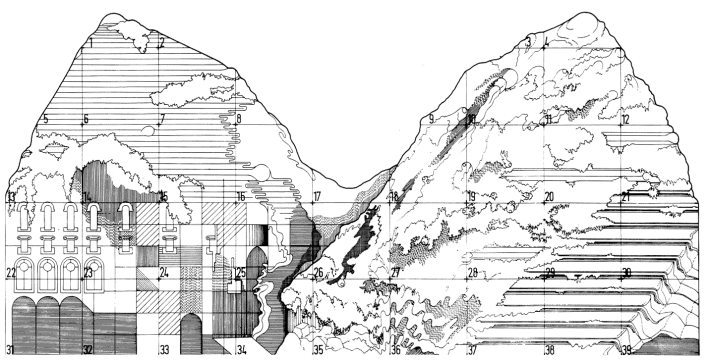Tarzans in the Media forest – Toyo Ito
Peter Cook, Sponge Building 1974
In the text, Toyo Ito questions the 20th century principles of modern architecture and the role of an architect to create artificial environments for human beings. The relationship of buildings with the context in a capitalist economy is complex and the role of the architect is changing and getting redefined. Also this role has an impact of the relationship and events between humans, their habitable space and the city.
He talks about the idea of buildings behaving as trees which blurs boundaries between artificial and natural environments. About the process of architecture being a continuous one which tries to attain equilibrium with its surroundings by relativistic relationships and processes that are constantly interacting and of creating a balance between survival and a shared sense of space.
I have always been intrigued by the differences that exist in architecture. The difference/contrast between two buildings adjacent to each other in a cityscape or between expectations and reality. Ito talks about the this gap in the example of the SENDAI MEDIATHEQUE under construction and the preconceptions of the design being a transparent abstract architecture which was transformed by the process into something more violent than the original idea. In the same example he also talks about the rigidity of archetypes and designated uses and differences they form when the events other than a designated use transpire in a space.
These differences and contradictions that exist in architecture give birth to utopias and fictional projects. The questions become important of what new architecture should take place of the old and how contextual and economic differences should be dealt with design in the complex reality of our city.
“The difficulty of building architecture lies in the way one perceives its distance from reality” . Every society is aspiring and trying to realize dreams of different ideas of utopia. Ito talks about creating fictional urban spaces as an attempt to invest architecture with its spirit without obsessing with its form or body.
These ideas in a sense go back and connect to the tree concept as any intervention in society must address the dynamic change and continuous processes and relationships between elements. These discrepancies give us a window into the reality of our time and help us critically analyse what exists and question preconceived notions and solutions.

